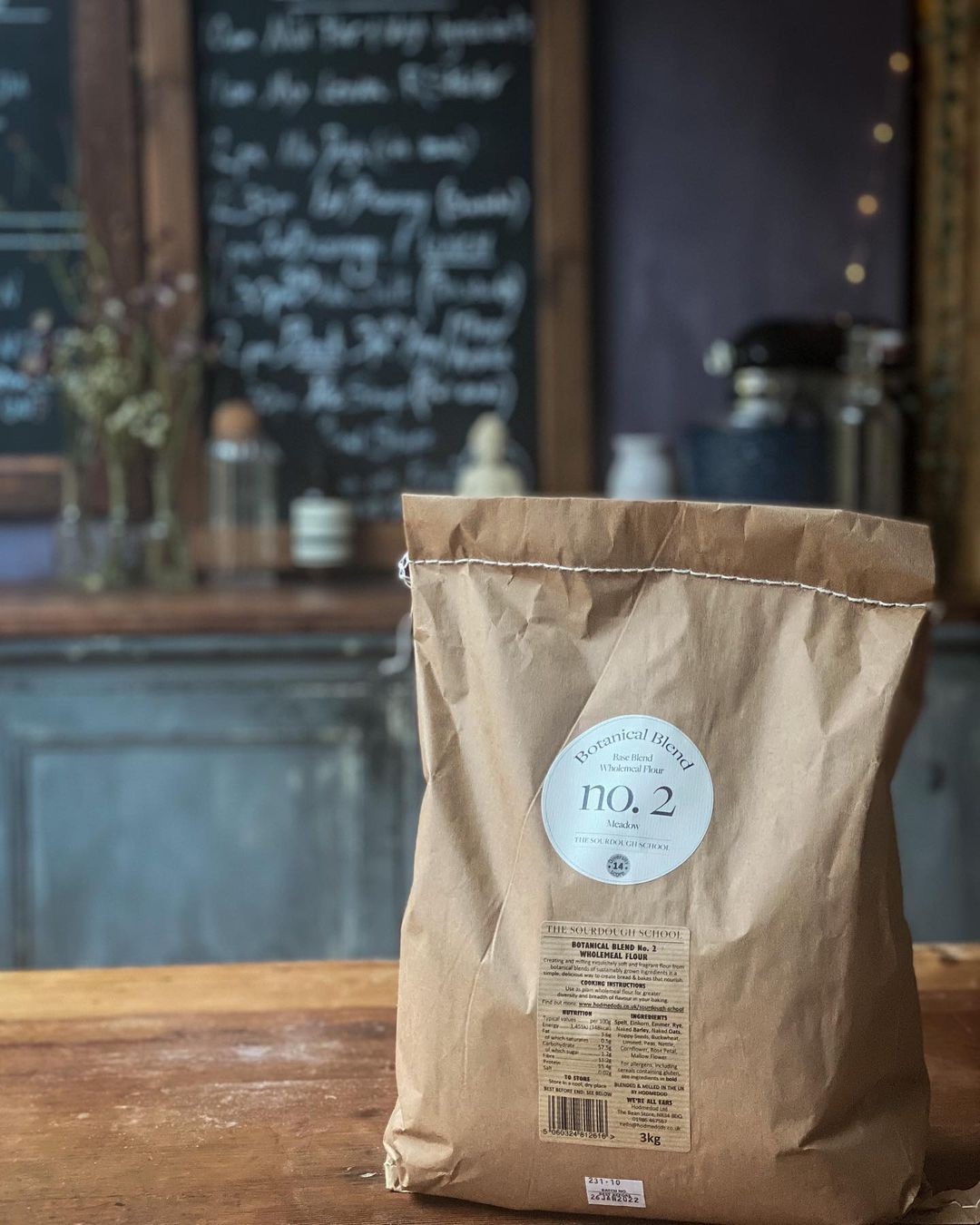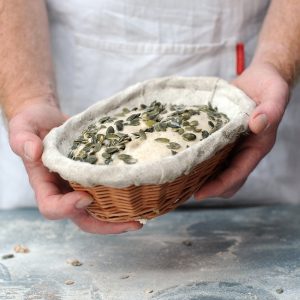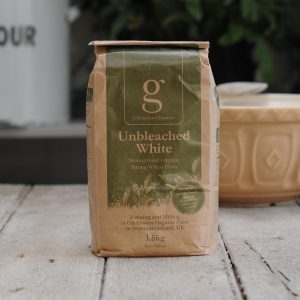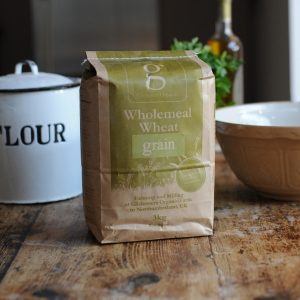Base Blend No. 2: Meadow Blend Flour – is part of our systems change programme, and Blend no 2 is our signature blend at the Sourdough School. It was the very first Botanical Blend Flour to be launched and available for sale. This is our base blend made with spelt, einkorn, emmer, barley, naked oats, poppy seeds, buckwheat, linseed, dried peas, dried edible meadow flowers, cornflower, mallow flower, rose petals & dried nettles.
It is time to rethink flour – baking as activism.
Using Botanical Blend flour is systems change on multiple levels:
All profits from the sale of the Botanical blend flours go back into the systems change programme. There is no pill to reverse the damage created by eating a poor diet, which is linked to multiple adverse health conditions and metal health issues. So our graduate GP’s and health care professionals are very limited in what they can do to combat poor diet when patients present with illnesses related to. The Bread Protocol has had such an amazing impact on participants in our dietary intervention studies that we realised that baking is revolutionary way to support social change and support both physical and mental health through bread making. So as part of systems change our programme our healthcare graduates are able to prescribe bread making as a social prescription. To help support this all the profits from the sale of our blends go into a fund that allowing GP’s to order flour for their patients to bake with help them learn to bake the most nourishing bread possible as part of the social prescription.
Baking with this flour is an activism again global food systems. The foundations of baking sourdough are flour, salt, water and fermentation. It’s simple, but there is a fundamental flaw in this principle: the flour. Most commercial flour is based on monoculture, so on a macro level baking using Botanical Blend flour is a powerful act of delicious defiance against the global industrialisation of our most basic food and absolute rejection of monoculture. It is also however a wonderful example to the food industry of what could be done to improve food systems.
Baking with this flour is supporting regenerative agriculture – in the current system is complicated, and both farmers and millers are trapped in an industrial system. This flour an is an example of regenerative, and co operative agricultural practices – more information below on our amazing friends Hodmedods.
Baking to nourish your gut microbiome is preventative medicine. Using just one ingredient went against our core principle at The Sourdough School, which is to bake to nourish the gut microbiome. Whilst there is still much to be discovered about our microbiome, all the research points over and over again to a simple fact: the wider the diversity of your gut microbiome, the more robust your health. This research is irrefutable; eating a diverse range of plants is one of the key factors affecting gut health. But achieving diversity in our most basic of foods, bread,Central to our research here at The Sourdough School is nourishing the gut for optimal health. The botanical blend flour is central to the Sourdough School Bread Protocol, Principle No 2 of increasing diversity in your diet. On a micro level this is about nourishing and delivering the diversity of fibre to optimally nourish your gut microbiome. The wider the diversity of foods that you feed your gut microbiome, the wider the diversity of microbes in your gut and the more robust your health.
3kg bag of flour
Shipping note: this blend is currently available to ship to UK ONLY. We hope to be able to ship this item to the EU again soon once post-Brexit customs issues are resolved. International delivery will also soon be available.
____________________________________________________________________
Vanessa Kimbell
To learn how to bake sourdough online with Vanessa you can join the Sourdough Club





